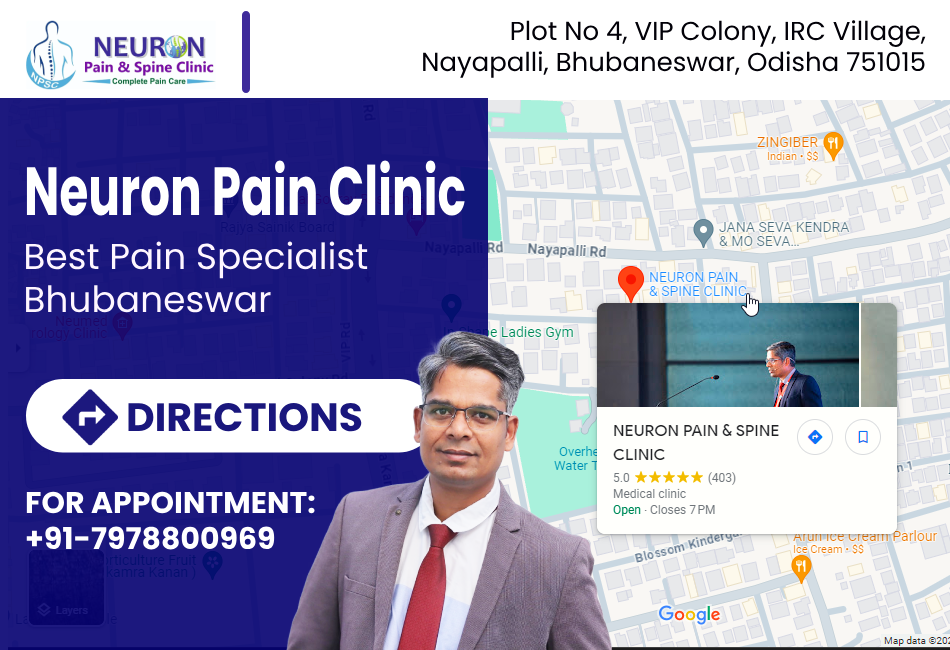Introduction
Shoulder joint is the most mobile joint of human body. Shoulder is a ball-and-socket joint and is shallow in nature and is covered by tendinous attachment of 4 muscles on the top of the joint known as “rotator cuff”. In order to accommodate the shoulder joint ball or head of the humerus, there is a fibrocartilaginous structure known as “glenoid labrum”. As the bottom part is not supported much, there is inherent risk of dislocation and subluxation of shoulder with injury, or accident.
Shoulder pain is the 3rd commonest source of musculoskeletal pain after back pain and knee pain. There are various causes of shoulder pain including arthritis, ligament, tendon, muscle, joint capsule, labrum and nerve-related pain but frozen shoulder & rotator cuff tear stands out as the two commonest causes of shoulder pain.
Causes of Chronic Shoulder Pain
Below are the causes of chronic shoulder pain:
- Frozen Shoulder or Adhesive Capsulitis
- Rotator cuff disease- Tendinopathy or Tendinosis and Tendon Tear (Partial or Full-thickness)
- Osteoarthritis of shoulder
- Rheumatoid arthritis
- Bursitis (Bursa is a small fluid-filled sac or pouch between bone and muscle insertion and its inflammation is bursitis)
- Acromio-clavicular joint arthritis
- Glenoid labrum injury or tear
- Tendinitis
- Sprains
- Bony spurs
- Cervical spine disc bulge or facet arthropathy
- Nerve impingement or injury
What is Frozen Shoulder?
We already know that shoulder joint has the widest range of motion in human body. In Frozen shoulder, the joint freezes which means it loses its wide range of motion. Patients find it difficult to move it in the front, back or sideways to carry out routine activities. Not only the movement gets restricted but also pain adds to the misery. Patients frequently experience night pain and sleep is impaired leading to frustration and poor quality of life. Frozen shoulder (also known as Adhesive Capsulitis) passes through 3 phases- freezing, frozen and thawing. In the initial phase, pain is more whereas in the 2nd phase, range of motion of gets severely restricted affecting activities greatly in addition to pain. If left untreated, it may slowly resolve in next 15-18 months period (the 3rd phase).
Frozen shoulder typically affects patients with diabetes, thyroid problems, brain stroke, following thoracic, cardiac or even shoulder surgery, or shoulder injury.
What is Rotator Cuff Disease?
Rotator cuff is a group of FOUR muscles and tendons (from front to back, they are subscapularis, supraspinatus, infraspinatus and teres minor) which surround the shoulder joint and moves the joint in all directions and keeps the head of the shoulder joint in its position firmly. Between the tendinous insertion of rotator cuff and the overhanging bone (acromion) lies a fluid-filled bursa (Image please). This bursa helps in smooth gliding of the tendons below the bone during movement and activities and also protects the tendon from wear and tear.
Rotator cuff disease can manifest as tendinopathy, means tendons become swollen, lose it characteristic appearance because of structural changes. This is typical wear and tear following chronic, repeated overhead activities or overuse injury and even sports. Here the tendon is not torn. Other form of rotator cuff disease is tear of the tendon leading to pain and weakness in shoulder joint. This tear can be partial or full-thickness (image please).
When tendon tears are chronic and untreated, the torn proximal part can get retracted and the muscles become fluffy and atrophied. There is fatty degeneration or infiltration of the muscles.
Treatment
- Frozen Shoulder– Pain killer medicines, topical creams, physiotherapy are corner stone of management. In patients who have persistent pain, they usually benefit from ultrasound-guided target specific joint hydrodilation where the scars and ligament thickening is released leading to pain relief and improved range of movement.
- Rotator Cuff Tear/Disease– Most of partial-thickness tears can be managed without surgery with platelet-rich plasma (PRP) therapy into the torn tendon which helps in healing and regeneration of new tendons. If the tear is full-thickness, then surgery can be appropriate treatment.
- Barbotage– Sometimes, calcification develops inside tendons for which needle guided barbotage and aspiration is the treatment of choice and gain done under ultrasound guided for accuracy.
- Shoulder bursa and AC Joint Injection– These procedures are again done very commonly for specific type shoulder pain and with our expertise in “musculoskeletal ultrasound” we not only provide diagnostic ultrasound but also accurate interventions.
- Radiofrequency ablation– Sometimes RF ablation using heat can help in advanced rotator cuff disease and arthritis.
At Neuron Pain & Spine Clinic: We are a specialized centre for musculoskeletal pain and have ultrasound available in our clinic which enables us exactly pin-point the cause of shoulder pain in the clinic itself on most occasions- be it frozen shoulder, rotator cuff tear, tendinitis, bursitis or arthritis. This is the critical step towards decision making and further management. Also not to forget, cervical spine problem can cause shoulder pain and even both can co-exist in a patient making it very tricky. Here again, an experienced clinician’s history taking, examination and musculoskeletal ultrasound can make a difference in making proper diagnosis and treatment plan.

